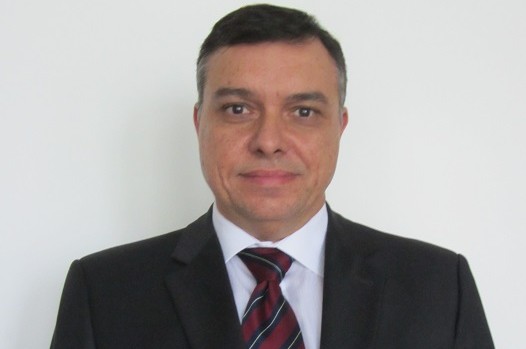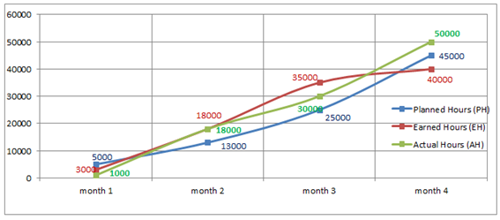
Ricardo Delarue
Senior Vice-President, Latin America

Senior Vice-President, Latin America
It is widely acknowledged that the productivity of labour and equipment is a critical factor in the success or failure of a project. However, is it possible to evaluate how this productivity impacts the overall project trend?
In this article, the author reviews a methodology for measuring and interpreting the overall productivity of a project known as Earned Value Management (EVM) or Earned Value Analysis (EVA). This methodology is commonly found in most high-end planning software.
É amplamente reconhecido que a produtividade da mão de obra e dos equipamentos é um fator crítico para o sucesso ou fracasso de um projeto. No entanto, é possível avaliar como essa produtividade impacta a tendência geral do projeto?
Neste artigo, o autor revisa uma metodologia para medir e interpretar a produtividade geral de um projeto, conhecida como Gestão do Valor Agregado (EVM) ou Análise do Valor Agregado (EVA). Essa metodologia é comumente encontrada na maioria dos softwares de planejamento de alto nível.
In implementing Earned Value Management (EVM), the first challenge is creating the Baseline Schedule, which includes the ‘planned labour units’ (typically expressed in hours) and the ‘quantities to be executed per activity’ for each task in the Work Breakdown Structure (WBS).
For example, in an “Activity 001: Installation of Secondary Cable Trays”, the planned labour unit is 0.80 hours per meter. This indicates that the plan is to spend 48 minutes (60 minutes × 0.80) on the installation of each meter of secondary cable tray.
This process of determining planned labour units and quantities is applied to all activities within the WBS to establish the ‘total planned hours’ for the project. It is essential to align these hours with the point in time when the contractor was selected.
Na implementação da Gestão do Valor Agregado (EVM), o primeiro desafio é a criação do Cronograma Base, que inclui as ‘unidades de trabalho planejadas’ (normalmente expressas em horas) e as ‘quantidades a serem executadas por atividade’ para cada tarefa na Estrutura Analítica do Projeto (WBS).
Por exemplo hipotético, para a “Atividade 001: Instalação de Bandejas de Cabos Secundários”, a unidade de trabalho planejada é de 0,80 horas por metro. Isso significa que o plano é gastar 48 minutos (60 minutos × 0,80) na instalação de cada metro de bandeja de cabos secundários.
Esse processo de determinação das unidades de trabalho planejadas e das quantidades é aplicado a todas as atividades dentro da WBS para estabelecer as ‘horas totais planejadas’ para o projeto. É essencial alinhar essas horas com o momento em que o contratado foi selecionado.
Once the baseline schedule is established and the planned quantities and labour units are entered for each activity, it is possible to create a Planned S Curve using the formula below:
Planned Hours (PH) = Planned Quantities × Planned Labour Units
Referring back to the example, if the planned quantity is 5,000 meters of secondary cable trays, we would calculate:
Planned Hours (PH) = 5,000 m × 0.80 hours/m = 4,000 planned hours.
By applying the same calculation for all project activities and cumulatively tracking the working hours on a monthly basis using planning software, we can generate an S Curve for the Planned Hours (PH). The graphic below illustrates an example of an S Curve forecasting nearly 250,000 working hours for the entire project.

Uma vez que o cronograma base esteja estabelecido e as quantidades planejadas e as unidades de trabalho inseridas para cada atividade, é possível criar uma Curva S Planejada usando a fórmula abaixo:
Horas Planejadas (HP) = Quantidades Planejadas × Unidades de Trabalho Planejadas
Retornando ao exemplo, se a quantidade planejada for de 5.000 metros de bandejas de cabos secundários, teríamos:
Horas Planejadas (HP) = 5.000 m × 0,80 horas/m = 4.000 horas planejadas.
Ao aplicar o mesmo cálculo para todas as atividades do projeto e acumular as horas trabalhadas mensalmente usando o software de planejamento, é possível gerar uma Curva S para as Horas Planejadas (HP). O gráfico abaixo ilustra um exemplo de uma Curva S que prevê quase 250.000 horas de trabalho para o projeto inteiro.

Usually, on a monthly basis, the actual progress (or quantities executed per activity) is recorded and monitored. In Earned Value Management (EVM), actual progress is measured by ‘Earned Hours,’ which is calculated as the quantities installed multiplied by the Planned Labour Units. Thus, the formula for calculating progress (EH) using this recorded data is:
Earned Hours (EH) = Actual Quantities Executed × Planned Labour Units
Continuing with our example, let’s say that the production of ‘secondary cable trays’ during the first month of the project was 400 meters. Our progress (Earned Hours) would be:
Earned Hours (EH) = 400 m × 0.80 hours/m = 320 hours.
By performing the same calculations across all activities in the schedule for the month, we can determine the overall total of ‘Earned Hours.’ But why is this information important? Let’s compare both formulas:
Planned Hours (PH) = Planned Quantities × Planned Labour Units
Earned Hours (EH) = Actual Quantities × Planned Labour Units
Comparing these formulas, it is evident that the only variable is the difference between the ‘planned’ and ‘actual’ quantities. Therefore, if the ‘actual’ quantities installed exceed the ‘planned’ quantities in the reporting period, the Earned Hours will be greater than the Planned Hours. Common sense suggests that this means we are ahead of our planned progress, as we have completed more work than anticipated. Conversely, if Earned Hours are less than Planned Hours, it indicates that we are falling behind schedule.
Geralmente, em uma base mensal, o progresso real (ou as quantidades executadas por atividade) é registrado e monitorado. Na Gestão do Valor Agregado (EVM), o progresso real é medido pelas ‘Horas Ganhas,’ que são calculadas como as quantidades instaladas multiplicadas pelas Unidades de Trabalho Planejadas. Assim, a fórmula para calcular o progresso (EH) usando esses dados registrados é:
Horas Agregadas (EH) = Quantidades Reais Executadas × Unidades de Trabalho Planejadas
Continuando com nosso exemplo, digamos que a produção de ‘bandejas de cabos secundários’ durante o primeiro mês do projeto foi de 400 metros. Nosso progresso (Horas Ganhas) seria:
Horas Agregadas (EH) = 400 m × 0,80 horas/m = 320 horas.
Ao realizar os mesmos cálculos para todas as atividades no cronograma durante o mês, podemos determinar o total geral de ‘Horas Ganhas.’ Mas por que essa informação é importante? Vamos comparar ambas as fórmulas:
Horas Planejadas (PH) = Quantidades Planejadas × Unidades de Trabalho Planejadas
Horas Agregadas (EH) = Quantidades Realizadas × Unidades de Trabalho Planejadas
Comparando essas fórmulas, é evidente que a única variável é a diferença entre as quantidades ‘planejadas’ e ‘reais’. Portanto, se as quantidades reais instaladas excederem as quantidades planejadas no período de relatório, as Horas Ganhas serão maiores que as Horas Planejadas. O bom senso sugere que isso significa que estamos à frente do progresso planejado, pois realizamos mais trabalho do que o esperado. Por outro lado, se as Horas Ganhas forem menores que as Horas Planejadas, isso indica que estamos atrasados em relação ao cronograma.
EVM goes a step further by identifying the efficiency of direct labor. In other words, it verifies whether the hours spent in relation to the quantities executed align with the plan. The formula for this part of the EVM process is:
Actual Hours (AH) = Actual Quantities × Actual Hours (Actual Labour Units)
Actual Labour Units can be measured on a daily or weekly basis for each activity, depending on the required level of accuracy. It is important to note that this analysis necessitates a significant commitment from the project foreman, and an administrator will be needed for every 200 workers to record and monitor the data effectively.
A EVM avança um passo além, identificando a eficiência da mão de obra direta. Em outras palavras, verifica se as horas gastas em relação às quantidades executadas estão de acordo com o planejado. A fórmula para essa parte do processo de EVM é:
Horas Atuais (AH) = Quantidades Reais × Horas Atuais (Unidades de Trabalho Consumidas)
As Unidades de Trabalho Reais podem ser medidas diariamente ou semanalmente por atividade, dependendo do nível de precisão necessário. É importante ressaltar que essa análise exige um compromisso significativo do encarregado do projeto, e um administrador será necessário para cada 200 trabalhadores para registrar e monitorar os dados de forma eficaz.
It is now possible to compare the 3 formulae, as follows:
Planned Hours (PH) = Planned Quantities x Planned Labour Units
Earned Hours (EH) = Actual Quantities x Planned Labour Units
Actual Hours (AH) = Actual Quantities x Actual Hours (Actual Labour Units)
Comparing Planned Hours (PH) with Earned Hours (EH) provides us with an indication of progress. If the EVM analysis shows we are behind schedule then we need to know why and take corrective action.
Comparing Actual Hours (AH) with Earned Hours (EH) gives us an indication of productivity. Common sense tells us that if we spend more time than planned on an activity our productivity is below par. Similarly if we spend less time than planned our productivity is above par. If the EVM analysis shows we are below par we need to find out why and take corrective action. In both cases, if we are above par we also need to know why and maintain it.
Let´s go back to our example, and consider that for the production of 400m of cable trays, we spent 360 ‘Actual Hours’ instead of 320 ‘Earned Hours’. This gives us a production factor of 89% when ideally we want 100% or more. Not good – we need to know why and implement corrective action.
The summary of this methodology is presented below through another example involving a project with 45,000 man-hours scheduled for completion over a 4-month period. The data recorded during each period is shown in the table below:

By plotting this data each month the following graph emerges over time:

What we can tell from the data and graph in each month is:

In addition:
O resumo dessa metodologia é apresentado a seguir por meio de outro exemplo envolvendo um projeto com 45.000 horas de trabalho programadas para ser concluído ao longo de um período de 4 meses. Os dados registrados em cada período estão mostrados na tabela abaixo:

Ao plotar esses dados a cada mês, o seguinte gráfico emerge ao longo do tempo:

A partir dos dados e do gráfico de cada mês, podemos concluir o seguinte:

Além disso:
EVM is informative and allows the Project Manager to make decisions and take early corrective actions where needed during the execution of the works.
Like all things that are good EVM comes at a cost, requiring good and accurate administration to be effective. Moreover, poor administration of EVM will result in poor information and inappropriate management decisions and actions.
In the authors experience one EVM Administrator working closely with the site foreman, will be able to evaluate the daily EVM data for a work force of 200.
A EVM é informativa e permite ao Gerente de Projeto tomar decisões e implementar ações corretivas conforme necessário durante a execução do projeto.
No entanto, como todas as ferramentas valiosas, a EVM vem com um custo, exigindo uma administração cuidadosa e precisa para ser eficaz. Uma má gestão da EVM pode levar a informações imprecisas e decisões e ações gerenciais inadequadas.
Na experiência do autor, um Administrador de EVM, trabalhando em estreita colaboração com o encarregado de obra, pode avaliar efetivamente os dados diários de EVM para uma força de trabalho de 200 homens.